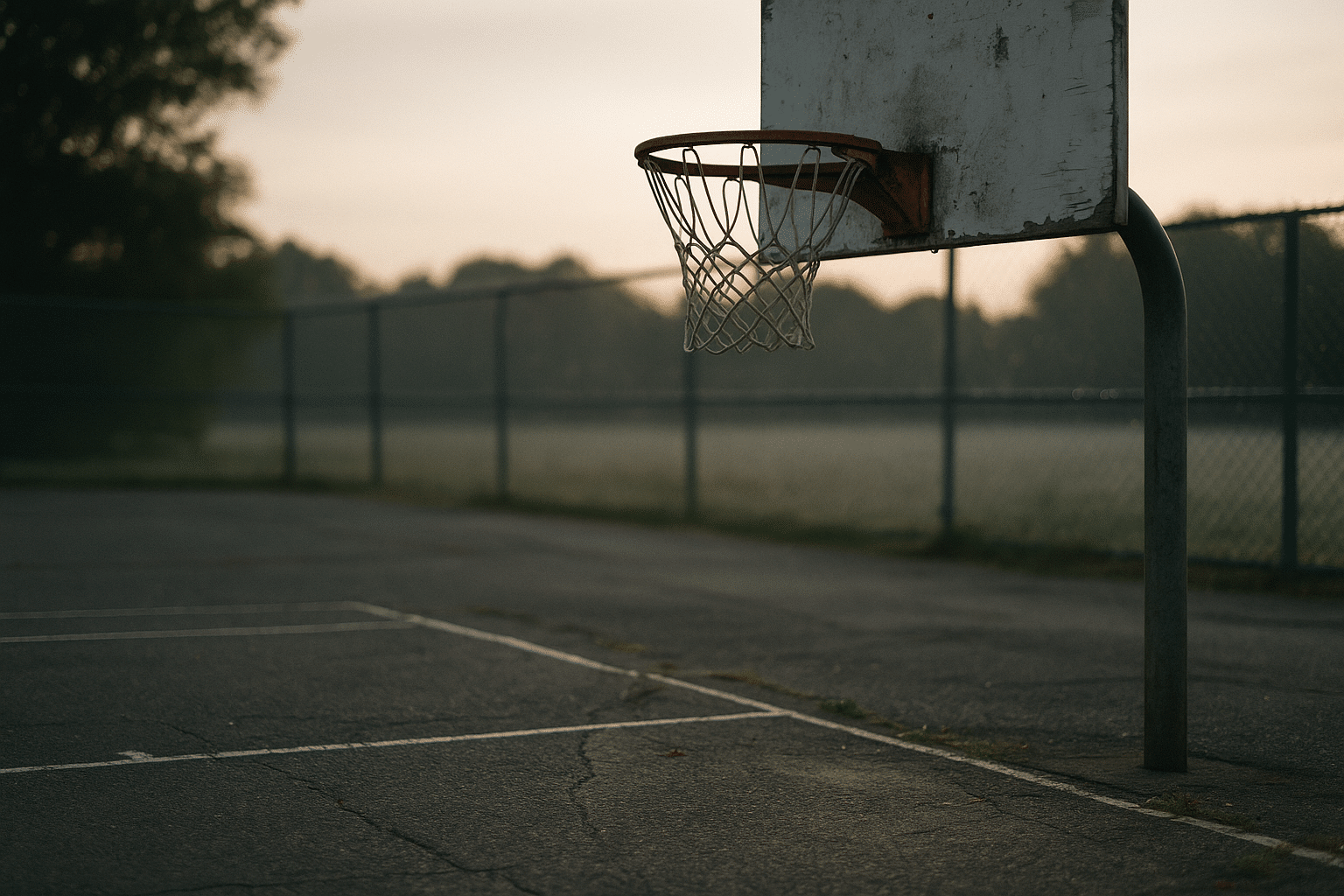
Exploring Basketball: Updates and strategies in basketball.
Introduction and Outline: Why Basketball Matters Now
Listen closely on a city morning and you can hear it: the resonant thump of a ball, the creak of a rim, the whispered choreography of pick, cut, pass. Basketball continues to grow because it is both simple and profound. All you need is a hoop, a ball, and a patch of surface; from there, a world of strategy unfolds—equal parts geometry, timing, and trust. As the game evolves, updates in rules interpretation, analytics, and training reshape how teams create shots and protect the paint. This article surveys those changes and translates them into practical insights for players, coaches, and fans who want to understand not only what is happening, but why.
To organize the journey, here is a concise outline of the topics that follow:
– The framework: rules, court dimensions, and pace, and how they shape outcomes
– Offensive innovation: spacing, pick-and-roll families, cutting actions, and shot quality
– Defensive counters: switching, zone principles, help-and-recover, and rim protection
– Player development: modern practice design, physical prep, and skill building
– Conclusion and action plan: converting insight into daily habits and team culture
Basketball’s relevance lies in its accessibility and adaptability. The same principles guide a weekend pickup run and a high-stakes tournament: generate advantages, read the floor, and convert opportunities efficiently. Yet the tools to achieve that have shifted. Shot selection now favors high-value attempts at the rim and from beyond the arc; defensive schemes respond with switches, timelier help, and selective traps. Training is more targeted, with small-sided games and constraints that replicate real decisions. Video, statistics, and simple tracking—like charting shot types and turnovers—help teams iterate without overcomplicating the process.
Two threads weave through the sections that follow. First, the game is increasingly about space—how quickly advantage is created and how well it is extended to the second and third side of the floor. Second, success hinges on alignment: players embracing defined roles, coaches designing clear teaching progressions, and teams committing to repeatable habits under pressure. If the court is a canvas, today’s strategies are the brushstrokes, and the most consistent artists are those who blend technique with purpose.
Rules, Court Dimensions, and Pace: The Framework That Shapes the Game
Before strategy, there is structure. Basketball typically features five players per team on a rectangular court. Many top-level courts measure 94 by 50 feet, while others use 28 by 15 meters. The three-point line varies by level and location: it is shorter in the corners and arcs to a greater distance above the top of the key. A restricted area arc beneath the rim discourages collisions and clarifies verticality. Shot clocks commonly range from 24 to 30 seconds, and backcourt rules require the ball to cross midcourt within 8 to 10 seconds. These details set the tempo of decision-making and the value of each possession.
Why does this matter? Because rules and dimensions influence shot selection and defensive positioning. Consider expected value: a midrange jumper converted at 45% yields 0.90 points per shot. A three-pointer made at 35% returns 1.05 points per shot, and a trip to the free-throw line that averages 75% accuracy on two attempts returns 1.50 points for that trip. Across many competitions, that arithmetic encourages teams to prioritize threes, layups, and free throws while using ball screens and cuts to pry open those opportunities. Defenses, in turn, must protect the rim, contest the arc, and pressure without fouling—an eternal triangle with no easy answer.
Pace—the number of possessions in a game—also shapes outcomes. More possessions multiply both scoring chances and mistakes; fewer possessions magnify the value of each turnover and offensive rebound. Teams that push the ball after defensive rebounds, use early drag screens, and sprint to the corners often find usable shots before the defense is set. Conversely, deliberate teams slow the pace to hunt matchups and post seals, trusting that a cleaner look late in the clock can be worth the wait.
Key framework takeaways include:
– Court geography dictates spacing windows—corners, slot areas, and dunker spots matter.
– The shot clock rewards decisive reads and punishes hesitancy; early advantages are gold.
– Free throws quietly swing games; drawing fouls on high-value shooters compounds impact.
– Turnovers are double losses—no shot taken and usually a transition chance conceded.
The game’s structure does not merely house strategy; it sculpts it. Understanding the framework is the first step toward diagnosing why certain tactics flourish at one level and falter at another.
Offensive Strategy in the 2020s: Spacing, Screens, and Shot Quality
Modern offenses operate like ecosystems: advantage creation, advantage extension, and advantage conversion. Creation comes from ball screens, dribble handoffs, post touches that force a help defender to commit, and quick-hitting cuts that disorganize coverage. Extension means moving the advantage to the second side—swing passes, re-screens, and drive-and-kick sequences that shift the weak side. Conversion is the finish: a high-quality three, a clean rim attempt, or free throws.
Spacing is the foundation. Five-out alignments pull rim protectors from the paint, opening lanes for drives and slips. Four-out-one-in structures leverage a mobile interior player who screens, seals, or plays from the short roll, hitting cutters and corner shooters. Even in three-out-two-in looks, modern spacing places at least one player in the “dunker spot” to occupy help while slot shooters stretch the defense. The aim is to widen closeout distances and stretch decision times, making a defense late even when correctly positioned.
Screens are the steering wheel of today’s offense. High ball screens threaten two defenders at once; re-screens challenge footwork and communication. Staggered screens free movement shooters without the ball, while post splits turn a simple entry pass into a cutting clinic. Variations with back screens on the roller or “ghost” screens (fake contact and pop) punish defenders who overhelp. The principle is consistent: create a moment of uncertainty and drive a wedge into coverage.
Shot quality ties everything together. Teams often evaluate possessions by points per possession rather than raw field goal percentage. A clean catch-and-shoot three may produce more long-term value than a contested midrange pull-up, even if the pull-up falls tonight. Small edges compound over time:
– Corner threes travel a shorter distance and can be generated via drive-and-kick or post skip.
– Short-roll playmaking turns traps into 4-on-3 advantages if the short roller can pass on the move.
– Second-side actions—like dribble handoff into pick-and-roll—stress help defenders who just closed out.
– Offensive rebounding, especially from the weak-side wing, can convert misses into rhythm threes.
Creativity matters, but clarity matters more. The most reliable offenses teach reads, not plays: how to recognize overplays, when to cut behind a ball-watcher, and how to punish a low man who tags late. The result is an offense that feels inevitable: a sequence of dominoes toppling until a defender must concede something valuable.
Defensive Countermeasures: Switching, Help-and-Recover, and the Art of Containment
If modern offense is about engineering space, modern defense is about buying time—delaying the advantage long enough to force a difficult shot. The building blocks are positioning, communication, and discipline. Positioning aims to influence the ball away from preferred areas and shrink driving gaps. Communication names the threat—screen left, switch, peel switch—so that five minds act as one. Discipline avoids the silent turnover: fouls that reset the shot clock or gift free throws.
Coverage choices reflect personnel and opponent tendencies. Drop coverage keeps the big near the rim, contesting at the point of attack without surrendering layups. It asks guards to fight over screens and rear-view contest pull-up threes. Switching, by contrast, trades size mismatches for fewer rotations; it can neutralize actions that rely on confusion, provided helpers are ready to “scram” smaller defenders out of the post. Hedge-and-recover disrupts timing for movement shooters, while selective trapping targets ball handlers who struggle with early passes. On the wings, “ice” or “down” calls on side pick-and-rolls angle the ball away from the middle and toward baseline help.
Zone and hybrid schemes add another layer. A 2-3 or 3-2 shape can soak up drives and lure floaters, while matchup principles within the zone allow defenders to track shooters more closely. Against five-out spacing, defenses may “show crowd” in the gaps, momentarily overloading the strong side before springing back to shooters. The goal is not to erase every look—that is unrealistic—but to redirect a possession toward low-efficiency outcomes late in the clock.
Practical defensive habits include:
– Nail help: from the slot, stunt at the ball then recover under control to your shooter.
– Tag-and-release: briefly check the roller, then sprint back to corner responsibility.
– Verticality: jump straight up, chest to chest, to contest without fouling.
– Early talk: call screens before contact so teammates can choose the coverage on time.
– Rebounding triangles: carve space early; box out first, then pursue the ball.
Well-timed help can turn a layup into a kickout, and a kickout into a contested three. Over the course of a game, these small delays accumulate. A contested rim attempt that meets a second defender, a late-clock isolation without an advantage, a rushed corner three after two stunts—these are the defensive equivalents of efficient offense: consistent, repeatable, and quietly decisive.
Player Development, Practice Design, and Conclusion: Turning Knowledge into Wins
Strategy lives or dies with skill. The most elegant playbook falters if players cannot shoot under fatigue, change speeds on a bounce, or complete reads while bodies fly through a crowded lane. Modern development blends technique with context: instead of endless isolated drills, players practice skills inside game-like situations with defenders, timing constraints, and scoreboard pressure.
Training pillars worth adopting:
– Constraints-led games: modify space, time, or scoring to encourage specific behaviors (e.g., drive-and-kick worth extra points to reinforce paint touches and hockey assists).
– Shot diet under fatigue: alternate sprints with catch-and-shoot, off-movement threes, and rim finishes to mimic late-game decision fatigue.
– Finishing variety: floater, high off-glass, reverse using the rim as a shield, and power finishes through contact.
– Footwork catalog: stride stop, jump stop to pivot, inside foot pivot into rise-up, and one-two rhythm into pull-up.
– Short-roll reads: one-dribble lobs, corner skip, and pocket bounce with eyes up.
– Defensive reps: closeout angles (short, long, and choppy steps), chesting up without reaching, and early gap stunts.
Physical preparation supports durability and performance: lower-body strength for deceleration and reacceleration, core stability to absorb contact, and ankle mobility to stabilize landings. Recovery basics—quality sleep, hydration, and sensible workloads—help players sustain sharpness across a season.
Coaches can convert ideas into structure with a balanced weekly plan:
– Day 1: Advantage creation—ball screens, handoffs, and first-side drives.
– Day 2: Advantage extension—second-side actions, re-screens, and skip passes.
– Day 3: Advantage conversion—finishing, catch-and-shoot under pressure, free-throw routines.
– Day 4: Defensive identity—coverage calls (drop, switch), shell drill with live constraints.
– Day 5: Special situations—ATO sets, sideline and baseline inbound execution, two-for-one scenarios.
Conclusion: Basketball rewards clarity. For players, that means a daily habit of purposeful reps and film that highlights decisions, not just results. For coaches, it means designing practices that look like the game and choosing a few defensive coverages to master rather than many to memorize. For fans, understanding the logic of spacing, advantage, and shot value enriches every possession you watch. The court will keep evolving, but the fundamentals of reading, reacting, and working together will remain. Aim for incremental gains each week, track what matters, and let the compounding effect of sound choices turn effort into outcomes.


